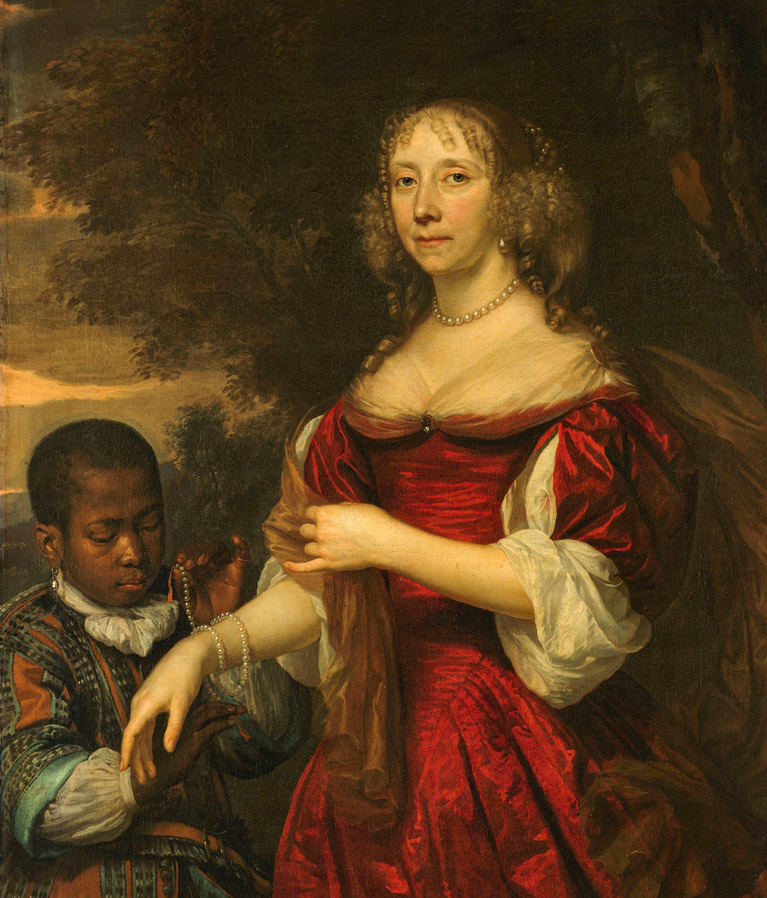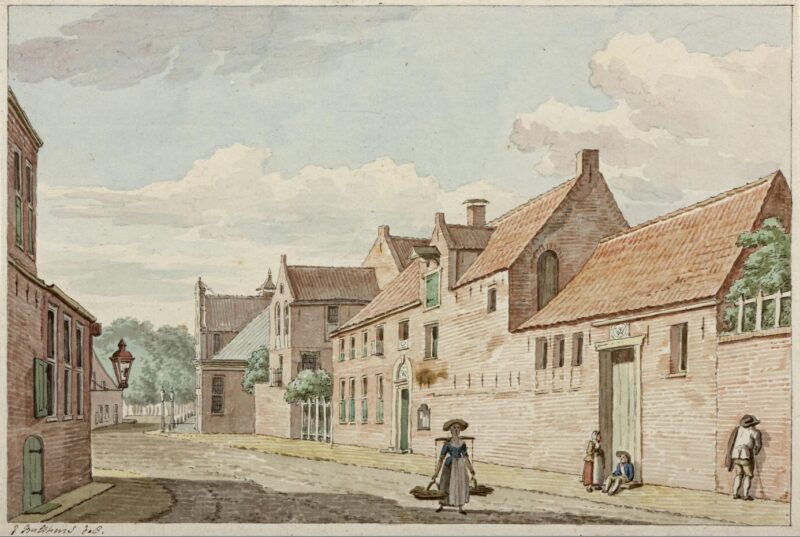
Researching Groningen’s dark past
Slavery
and the city
Groningen is late.
Sure, a little over two years ago, the city did decide to commission research into Groningen’s connection to slavery. Were the city and its citizens involved in it at all? Did they profit from the riches that were generated by enslaved labour in the Americas, Africa, and Asia? Did Groningers work for the VOC, the trading company that functioned in South Africa and Asia? Or for the WIC, which operated in the Americas?
However, the same questions had already been asked by other big cities, provinces, and business entities in the Netherlands years earlier. And the answer to all of these questions had been a resounding ‘yes’.
‘For a long time, the general understanding was that a lot of these things only happened in Amsterdam or Rotterdam’, says historian and VOC expert Anjana Singh. ‘But when other provinces started to look into it, Utrecht turned out to be involved too, Drenthe was involved, Gelderland – really everyone.’
Neither of the two northern Dutch provinces – Groningen and Friesland – allocated money for research, however. But then in 2021, the city of Groningen asked Singh, her colleague Bram Tánczos and Lieuwe Jongsma from the Groninger Museum to dive into the dark side of its history.
Naivety
An important and necessary step, Singh says. Because even though the topic is high on the agenda worldwide, the naiveté about Dutch involvement in slave trade is still very much alive. ‘When I started, several people asked me: “Do you think Groningen will be connected?” I was like: It has to be! Because how would I explain a historical exception like that, considering Groningen’s rich trading history?’
The city of Groningen did not exist in a vacuum, she explains. The Dutch nationalist writing of history has a tendency to play up the importance of Amsterdam and its Atlantic connections, but at the same time, it plays down the significance of other provinces. ‘But Groningen was very rich. It was a wealth based on agriculture on one side and trading on the other. The city had trading connections since pre-modern times with the entire hinterland up to the Baltic region connecting with Norway, Sweden, Denmark and Russia.’
Utrecht turned out to be involved too, Drenthe, Gelderland – really everyone
The pride of the Groningen traders was hurt when they missed the opportunity to participate in the VOC when it was established in 1603, and they worked hard to get a chamber with the WIC in 1623. According to Tánczos’ research, they managed to get a foot in the door with the VOC in later years, by working together with the province of Zeeland.
It’s no surprise, then, that Singh and Tánczos found that citizens of Groningen – especially elite families like Fockens, Sichterman, Alting and Van Imhoff – procured a lot of wealth in both Asia and South America. Slaves worked in their houses, but were also forced to do heavy manual labour in mines and on plantations. In addition, the families would use their position in the East to better their position in their hometown of Groningen.
‘People often believe that slavery was a thing of the Americas. But actually more people were enslaved and traded in Asia’, Tánczos says. ‘It was exactly the same sort of slavery, too. People were being shipped and sold.’
Sensitive topic
Slavery in Asia was just as vile as in the Americas. People from present-day India, Indonesia, and Malaysia were enslaved and shipped to different parts of Asia and to South Africa to sustain the VOC’s establishments. ‘When people think of slaves in Asia, they think of household servants, or people driving carriages or working in the garden’, Tánczos says. ‘But there was the same amount of backbreaking labour in the mines, or on the plantations.’
When we talk about the bad stuff, we say: that was so long ago, it doesn’t affect me
There is more, the researchers say. A lot more. But at this point they would rather not go into detail, since their work has not been shared with city officials yet and they are aware of how sensitive the topic is. Their findings could lead to the city of Groningen officially apologising for its role in the trade of enslaved peoples, which will surely spark a lot of discussion.
So they want to navigate the topic carefully. ‘We want to help people understand that we are not attacking their identity or sense of pride. We are trying to create a space for another narrative which we are backing up through archives’, Singh says. ‘Hopefully this will create an atmosphere where we can talk about our difficult pasts.’
‘It’s just kind of strange that we see the entrepreneurial spirit of the VOC as something that lives on in the DNA of our nation’, Tánczos adds. ‘But when we talk about the bad stuff, we say: that happened so long ago, it doesn’t affect me. You have to take the bad with the good.’

Apology
Singh wants people to understand what an apology would actually mean. And that is not – as many still feel – that people are personally accountable for what has happened many years before they were born. ‘It’s about who we are, as a society, and where we want to be in the future. About not being blind to the past but being informed by it.’
It’s also about being aware that mistakes have been made and that these mistakes have consequences that impact people today. ‘An apology would mean that we are ready to talk about it and we are willing to do more about it in the future.’
We have to remember that numerous indigenous agents were involved
Singh and Tánczos are happy to see that awareness is spreading quickly. When the founding of the VOC was celebrated nationally twenty years ago, only a handful of historians were pointing to the darker side of that history. ‘And these were mainly from Germany, or Dutch historians who are working on the Atlantic world and have careers in the United States’, says Singh.
Little had changed in 2013, when the Groningen Museum had a grand exhibition on the riches that merchant Jan Albert Sichterman brought back from the East, titled ‘The King of Groningen’. ‘There was absolutely no mention of how that money was made, or that he brought slaves to Groningen. What was showcased was the wealth that was created: silverware, porcelain, and luxurious silk and cotton textiles.’
All of that is unthinkable now. Research into the past is being done all over the country. The King, the Dutch government and many different cities and municipality have officially apologised for the slave trade.
Nuance
But as they write their own history of the slavery and trade in enslaved peoples in Groningen, the researchers are careful to take into account the complexity of it, without falling into the trap of silencing one side of history and only writing about the very dark aspects of the globalisation processes.
The history of slavery is four thousand years old, Singh says. ‘It is a global phenomenon that should be addressed with more nuance than good versus bad, or black versus white. We have to remember when we look at slavery in the Americas and Asia that numerous indigenous agents were involved. Chinese, Indonesian, Indian, Malay, and African agents were abducting men, women, and children and selling them to the best buyer, be it Dutch, French, or English. And the Europeans are providing the shipping networks, forcibly moving the enslaved people from one region to another.’
That also means she will not simply condemn people working for the VOC and WIC. ‘Imagine maybe thirty European men as crew on a slave-ship, with about two hundred enslaved men and women’, Singh says. ‘At any given moment, these enslaved people could rebel and take over. So, to keep them under control, they chain them, punish, and beat them. But at the same time, the crew are also men who leave their homes and families in order to make money and hopefully return home. And they must have been affected by the violence, too. So there is a human level of experience there.’